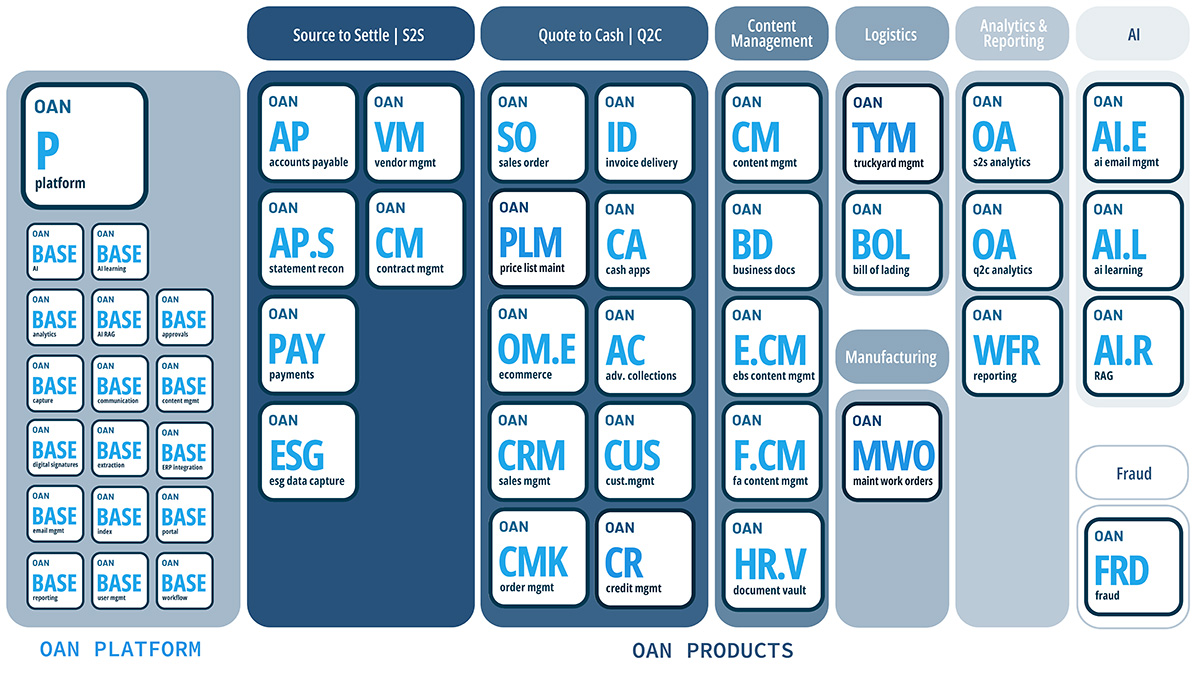When it comes to accounts payable (AP), no one wants to leave money on the table, but overpayments remain a costly reality for many organizations. Despite automation and ERP integration, duplicate payments, processing errors, and missed credits continue to occur. The good news? Most AP overpayments stem from five common areas. By proactively addressing these vulnerabilities, your business can significantly enhance payment accuracy and achieve measurable cost savings.
As a digital transformation partner, oAppsNET brings deep ERP expertise and practical insights to help organizations optimize accounts payable (AP) processes and build stronger financial controls. Here’s how to prevent AP overpayments before they affect your bottom line.
Standardize Invoice Entry to Eliminate Numbering Errors
Duplicate invoice payments often begin with a single, straightforward issue: inconsistent invoice numbering. While automation has reduced many of the manual entry errors that plagued paper-based systems, it’s introduced new challenges. Optical character recognition (OCR) tools can misread handwriting or scanned documents, resulting in errors. Leading zeros, dashes, or inconsistent formatting across platforms—like feeder systems, manual uploads, or e-invoicing—can confuse even the most sophisticated software.
To reduce this risk, establish strict invoice data entry standards. Configure your AP systems to disallow problematic characters and enforce consistent formatting across all input channels. This is especially critical when working with non-trade vouchers, check requests, or vendor statements that may not originate from a traditional purchase order.
Working with a knowledgeable partner can help organizations design and implement effective invoice validation processes that prevent errors and ensure consistency across platforms.

Cross-Verify All Feeder Systems with ERP Records
Even with standardization in place, multiple feeder systems can introduce duplicate payments if not carefully managed. For example, an invoice may be submitted manually and then later processed again via an e-invoicing platform, both with the same invoice number. Without continuous validation against the ERP system, both entries can be paid, creating costly overpayment issues.
To mitigate this, every source feeding into AP—whether spreadsheets, procurement software, or e-invoicing tools—should incorporate duplicate checks against historical ERP data. Centralized visibility is key.
By working with experienced consultants, organizations can assess their data flow and implement appropriate controls that reduce the risk of duplicate processing.
Calibrate Payment Parameters to Minimize False Positives
An effective AP duplicate detection system needs more than just rules—it needs smart configuration. Overly strict duplicate controls can generate thousands of false positives, overwhelming AP staff and leading to human error. On the other hand, if your system is too lenient, genuine duplicates will slip through unnoticed.
The key lies in strategic parameter tuning. Determine an acceptable level of risk for your organization and configure your duplicate detection criteria accordingly. This balance reduces unnecessary investigation while still catching high-risk duplicates.
Experienced advisors can help tailor these settings to your organization’s unique risk profile, transaction volume, and operational workflow.
Monitor and Process Credits Effectively
Credits represent a significant area of opportunity for AP departments, but they are also one of the most frequently mishandled areas. Whether it’s rebates, product returns, or contract adjustments, unprocessed credits account for a significant portion of lost recovery dollars. When e-invoicing platforms reject credits or never enter the system due to format incompatibilities, businesses miss out on key savings.
The solution? Implement a systemized approach to managing supplier credits. Create a recurring report within your platform to flag rejected credits. At the same time, establish alternative methods for suppliers to submit non-standard credits, especially those not tied to specific orders or transactions.
Bringing in a trusted AP optimization partner can offer guidance on streamlining credit handling and enhancing visibility into missed opportunities.

Conduct Targeted AR Reviews to Recover Missed Opportunities
Many accounts payable (AP) departments avoid reviewing accounts receivable (AR) statements due to the labor-intensive nature of the task. But AR reviews remain one of the most effective ways to identify duplicate payments and unclaimed credits. The trick isn’t to review everything—it’s to review smart.
Focus your AR statement reviews on high-impact suppliers—those with large spend volumes, frequent credit issuance, or industry-specific risk factors. Limit your review scope to credit memos, which often hold the highest recovery potential. When your team lacks capacity for a comprehensive review, consider partnering with a recovery audit firm to handle the process efficiently.
AP experts can offer structured guidance on conducting targeted AR reviews that maximize value while minimizing resource strain.
Bringing It All Together: AP Optimization Through Expertise
Preventing overpayments isn’t just about plugging holes—it’s about building smarter, more resilient systems. From consistent data validation and improved credit processing to thoughtful configuration of duplicate detection rules, today’s accounts payable (AP) departments need clear strategies and expert insights to operate effectively.
With deep knowledge of the ERP and AP domains, oAppsNET supports organizations seeking to reduce financial leakage and establish stronger controls. Our holistic approach helps you identify key process improvements and strengthen your accounts payable (AP) function over time.
Need Help Reducing AP Overpayments in Your Organization?
Contact oAppsNET today to learn how our tailored insights and optimization strategies can safeguard your financial operations from costly errors.

